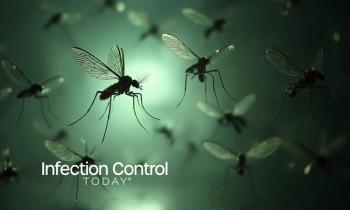
How Wound Classification Impacts Surgical Site Infection Rate

“Of all the SSIs we culled over that 3 years, about 42% of them required a wound class change by an infection preventionist,” Emily Grohs, MPH, CIC, tells ICT®.
Health care systems must get wound classification correct in order to paint an accurate picture of surgical site infection (SSI) rates, which, in turn, drive prevention efforts. However, some electronic medical records provide default wound classification that is not always accurate.
Infection preventionists can play a role in ensuring accurate wound classification in order to provide more precise SSI surveillance and reporting, according to a presentation at the
In a video interview with Infection Control Today®, Emily Grohs, MPH, CIC, infection preventionist at Cincinnati Children's Hospital Medical Center, detailed her talk on a standardized approach to wound class and its impact on the surgical site infection rate.
This transcript has been edited for clarity and length.
ICT®: To start, can you talk about the importance of proper wound classification in general and what spurred you to pursue the research in this presentation?
Grohs: Every procedure should have a wound classification assigned to it that's usually assigned by the surgeon or the surgical team. For infection preventionists, we use that for surgical site infection (SSI) surveillance and for reporting. Depending on how you report your SSIs, you may have to report by wound class.
ICT®: What is the current state of wound classification and what challenges exist?
Grohs: I can't speak for everybody, but for our institution…specifically, for wound class, our biggest challenges right now are getting the correct wound classification. We are trying to be with technology…we have an electronic medical record that will actually default a wound classification, so trying to be one step ahead. One less thing to think about while you're in the operating room. But we found that it's not always accurate and really also requires that human factor. That piece is kind of missing. Our surgical team really relies heavily on the default part, so when an IP is doing surveillance, we’ll usually go and find that the correction is not always there.
ICT®: Can you walk us through the research you conducted?
Grohs: I started SSI surveillance for the institution about a year ago. We went through our whole process as I was learning this and found that there are gaps in our current process that can possibly affect the rate that we are believing is true. We did a retrospective review of all SSIs over the past 3 years and looked at the wound classes for both the default wound class, also [how] the infection preventionist was classifying the wounds and, from there, came up with 3 different SSI rates and just showing how, depending on where you pull your data from, it does have an effect on your SSI rate.
We found that the biggest takeaway is that, of all the SSIs we culled over that 3 years, about 42% of them required a wound class change by an infection preventionist. So, assuming that the IP is following your wound class policy, 42% of them were not correct, and then a little over half of the ones that we did change were changes that would have an effect on our SSI rate, which was kind of a shocking result.
ICT®: Armed with these data, where do you go from here?
Grohs: Now that we have all that data, which is nice to have when you're presenting to perioperative leadership or other people who have a stake in the game and care about SSIs and want to do anything to target efforts to prevent SSIs…we have that data and we have presented it to perioperative leadership. They have a few different interventions that we're looking to try. Obviously, re-education is one of them, putting wound class back at the forefront of the education for new employees, recertification. We've also talked about possibly removing the default aspect of the wound class. That's a less popular option. We're trying to do a few different interventions before we actually go there, but those are the ones that we've started so far.
Newsletter
Stay prepared and protected with Infection Control Today's newsletter, delivering essential updates, best practices, and expert insights for infection preventionists.




